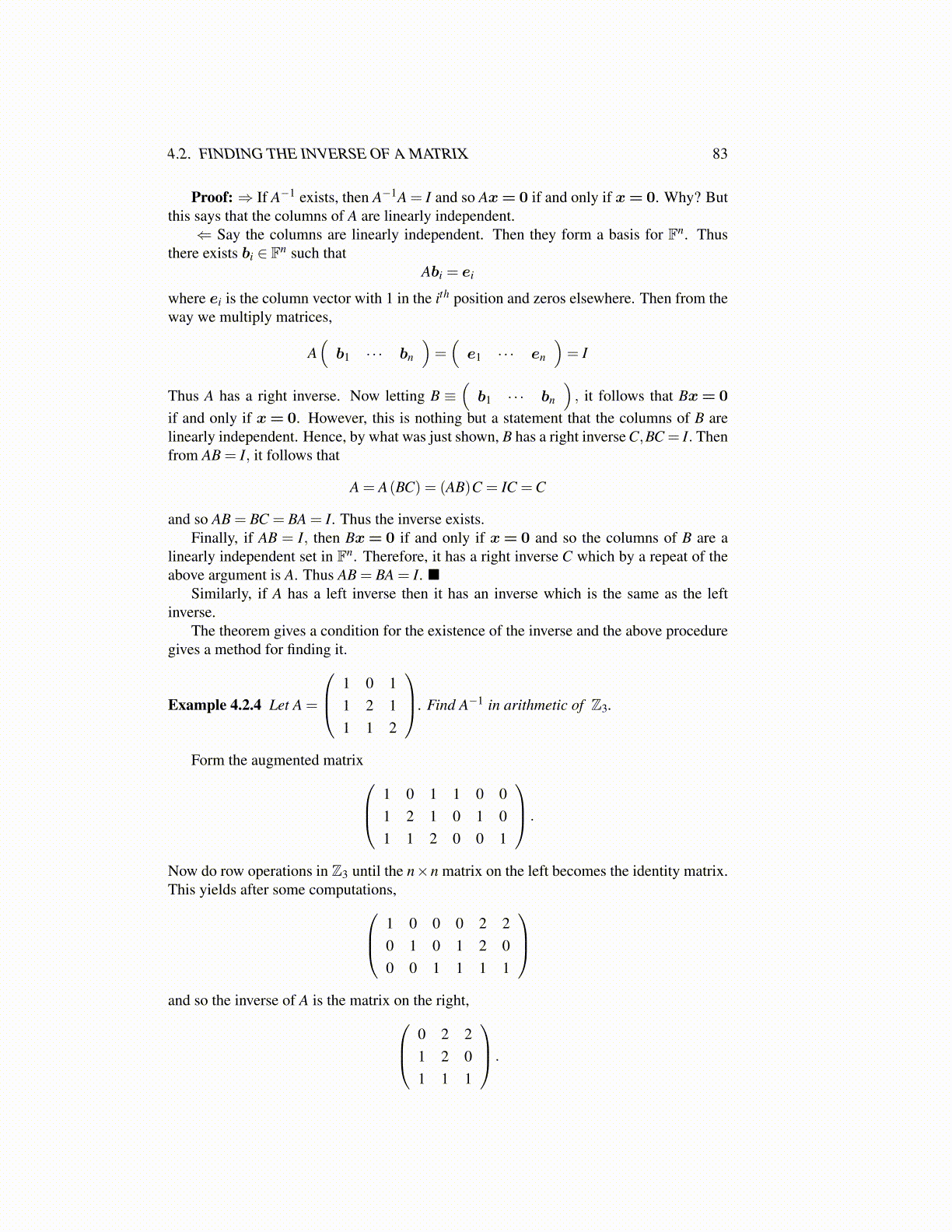
4.2. FINDING THE INVERSE OF A MATRIX 83
Proof: ⇒ If A−1 exists, then A−1A = I and so Ax= 0 if and only if x= 0. Why? Butthis says that the columns of A are linearly independent.⇐ Say the columns are linearly independent. Then they form a basis for Fn. Thus
there exists bi ∈ Fn such thatAbi = ei
where ei is the column vector with 1 in the ith position and zeros elsewhere. Then from theway we multiply matrices,
A(
b1 · · · bn
)=(
e1 · · · en
)= I
Thus A has a right inverse. Now letting B ≡(
b1 · · · bn
), it follows that Bx= 0
if and only if x= 0. However, this is nothing but a statement that the columns of B arelinearly independent. Hence, by what was just shown, B has a right inverse C,BC = I. Thenfrom AB = I, it follows that
A = A(BC) = (AB)C = IC =C
and so AB = BC = BA = I. Thus the inverse exists.Finally, if AB = I, then Bx= 0 if and only if x= 0 and so the columns of B are a
linearly independent set in Fn. Therefore, it has a right inverse C which by a repeat of theabove argument is A. Thus AB = BA = I. ■
Similarly, if A has a left inverse then it has an inverse which is the same as the leftinverse.
The theorem gives a condition for the existence of the inverse and the above proceduregives a method for finding it.
Example 4.2.4 Let A =
1 0 11 2 11 1 2
. Find A−1 in arithmetic of Z3.
Form the augmented matrix 1 0 1 1 0 01 2 1 0 1 01 1 2 0 0 1
.
Now do row operations in Z3 until the n×n matrix on the left becomes the identity matrix.This yields after some computations, 1 0 0 0 2 2
0 1 0 1 2 00 0 1 1 1 1
and so the inverse of A is the matrix on the right, 0 2 2
1 2 01 1 1
.